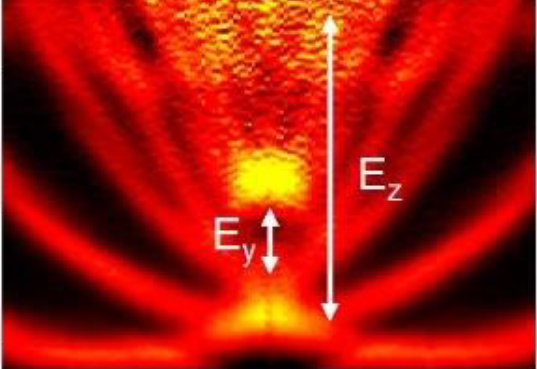USTC Paints Quantum Oscillation’s Origin with Atomic Force’ Brush’
The preparation of nano-devices is like painting on paper, while the “paper” is oxide interface and the “brush” is the tip of atomic force microscope(AFM); understanding of the “paper” is of significance. Prof. CHENG Guanglei from University of Science and Technology of China(USTC) and collaborators propose the one-dimensional origin of quantum oscillations in the two-dimensional oxide interface and conduct experimental verification. Related work is published in Physical Review Letters on February 14. [Phys. Rev. Lett. 120, 076801 (2018)]
The oxide interface is a new system that has emerged in the last fifteen years, Interface represented by the two-dimensional electronic system based on barium titanate is a general platform for studying basic condensed matter physics and is one of the most likely quantum materials to bring breakthroughs in the next decade. Quantum oscillation is an effective experimental method for detecting the physical properties of such materials.

Fig.1 Transconductance map showing lateral and vertical confinement energies. (Figure by CHENG’s team)
However, recent research shows that the quantum oscillations of barium titanate demonstrate characteristics which are different from conventional measurements, and several problems remain controversial. If we can understand the nature of these phenomena, it will be of great significance for the further development of oxide materials and devices.
Transconductance map showing lateral and vertical confinement energies. (Figure by CHENG’s team)
In this work, CHENG Guanglei and collaborators proposed that the quantum oscillations of the barium titanate electronic system originate from one-dimensional ballistic transport on the domain walls of the iron ballast in barium titanate. In order to verify this theory, researchers design a one-dimensional ballistic transport experiment, and obtain related key information. Since the accurate quantification of the conductance is observed, all transport electrons in the experiment are effectively detected. There are no contradictions exist in the two-dimensional system, hence the one-dimensional theory is proved.
CHENG Guanglei has long been engaged in the research of oxide nanoelectronics. Since entering USTC in 2016, CHENG has led his team not only to build quantum and nanoelectronics laboratories, but also to study the application of quantum technology and condensed matter physics.
This work is supported by the Organization Department of the Central Committee of the CPC and the Ministry of Education of PRC.
Link of the paper:
https://journals.aps.org/prl/abstract/10.1103/PhysRevLett.120.076801
(Written by Hu Dongyin, edited by Song Yahui)
Contact:FAN Qiong
Tel: +86-63607280
E-mail:englishnews@ustc.edu.cn
Back
